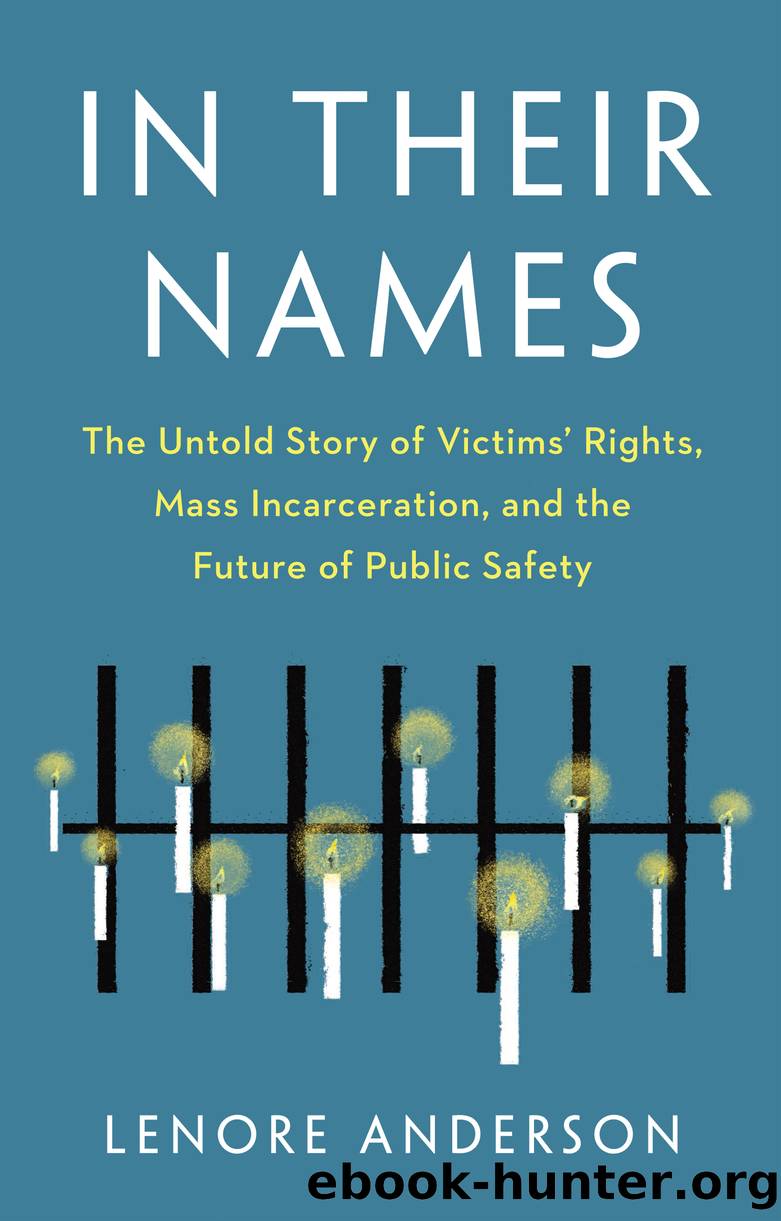In Their Names by Lenore Anderson

Author:Lenore Anderson
Language: eng
Format: epub
Publisher: The New Press
âNormal Reactions to Pathological Conditionsâ
Just as traumatic experiences outside imprisonment affect health, repeated violence and cruelty inside prison stimulates the same physiological reactions: hypervigilance, anxiety, PTSD, and diminished physical health. Long before health scientists evidenced the human bodyâs response to traumatic environments, in 1940, prison warden and author Donald Clemmer coined the phrase prisonization to describe the behavioral impact of incarceration: people tend to incorporate the destructive norms of the prison environment to survive, including responding aggressively to conflict or confusion and refraining from showing emotions.23 The 2014 definitive report by the National Research Council on the consequences of mass incarceration elaborated on the characteristics of the prison environment that contribute to prisonization. The constant threat of victimization is key among them. That threat of victimization translates into toxic levels of stress and even proactively assaulting others to minimize the threat.24 Importantly, Professor Craig Haney points out that these responses are normal human responses to extreme environments. As health science demonstrated, everyoneâs minds and bodies react to toxic stress, and prisons are literally designed to be an excessively stressful environment. âThese adaptations are not pathological in nature,â Haney wrote. âThey are normal reactions to a set of pathological conditions.â25
The physiological effect of being continually surrounded by trauma-causing events is heightened for people with prior histories of trauma, which is most of the incarcerated population. For people who suffered early-life trauma, the experience of incarceration can be retraumatizing, leading to even greater mental health deterioration and long-term physical and mental health consequences.26 Worse, some people in prison succumb to the same type of victimization they suffered prior to committing crimes and being sentenced to prison. One study, for example, found that people who had been sexually assaulted as children faced higher rates of sexual assault victimization in prison than those who had not.27
Being surrounded by this much violence has long-term traumatizing effects on people who work inside prisons as well as the people who live there. Corrections staff suffer from high rates of substance use disorder, depression, anxiety, and suicide.28 A 2011 study found that the rate of PTSD among prison guards in the United States is twice the rate of PTSD among military veterans.29 Another study found that the rate of suicide is twice as high as in the general public.30 Still other studies reveal high rates of physical illnesses and much shorter life expectancies.31 Given the pathological conditions in which they work, these awful outcomes should come as no surprise. In 2017, University of California at Berkeley researchers surveyed more than 4,000 correctional officers working in California state prisons about mental health and found that nearly 70 percent had witnessed someone get seriously injured or killed; 60 percent had seen or handled dead bodies; and nearly 50 percent feared on-the-job violent injury.32
Compounding the problem, prison staff are often trained in a culture that frowns on acknowledging the signs and symptoms of trauma, leaving many staff to suffer without the ability to speak openly about these issues.33 A PTSD diagnosis
Download
This site does not store any files on its server. We only index and link to content provided by other sites. Please contact the content providers to delete copyright contents if any and email us, we'll remove relevant links or contents immediately.
The Borden Murders by Sarah Miller(4241)
The Secret Barrister by The Secret Barrister(3614)
Police Exams Prep 2018-2019 by Kaplan Test Prep(2483)
Coroner's Journal by Louis Cataldie(2427)
The Splendid and the Vile by Erik Larson(2354)
Terrorist Cop by Mordecai Dzikansky & ROBERT SLATER(2035)
A Colony in a Nation by Chris Hayes(1880)
My Dark Places by James Ellroy(1876)
The Art of Flight by unknow(1802)
Black Klansman by Ron Stallworth(1745)
Objection! by Nancy Grace(1735)
A Life of Crime by Harry Ognall(1695)
The New Jim Crow by Michelle Alexander(1656)
American Prison by Shane Bauer(1620)
Anatomy of Injustice by Raymond Bonner(1619)
Whoever Fights Monsters by Robert K. Ressler(1574)
Invisible Women by Caroline Criado Perez;(1568)
Obsession (The Volkov Mafia Series Book 1) by S.E Foster(1536)
A is for Arsenic: The Poisons of Agatha Christie (Bloomsbury Sigma) by Kathryn Harkup(1506)
